Inside gallerist Stefan von Bartha’s art-filled Basel home
Second-generation gallery owner Stefan von Bartha invites us (virtually) into his art-studded Basel home to reflect on an unconventional childhood, eclectic collection and building on 50 years of his family's eponymous gallery
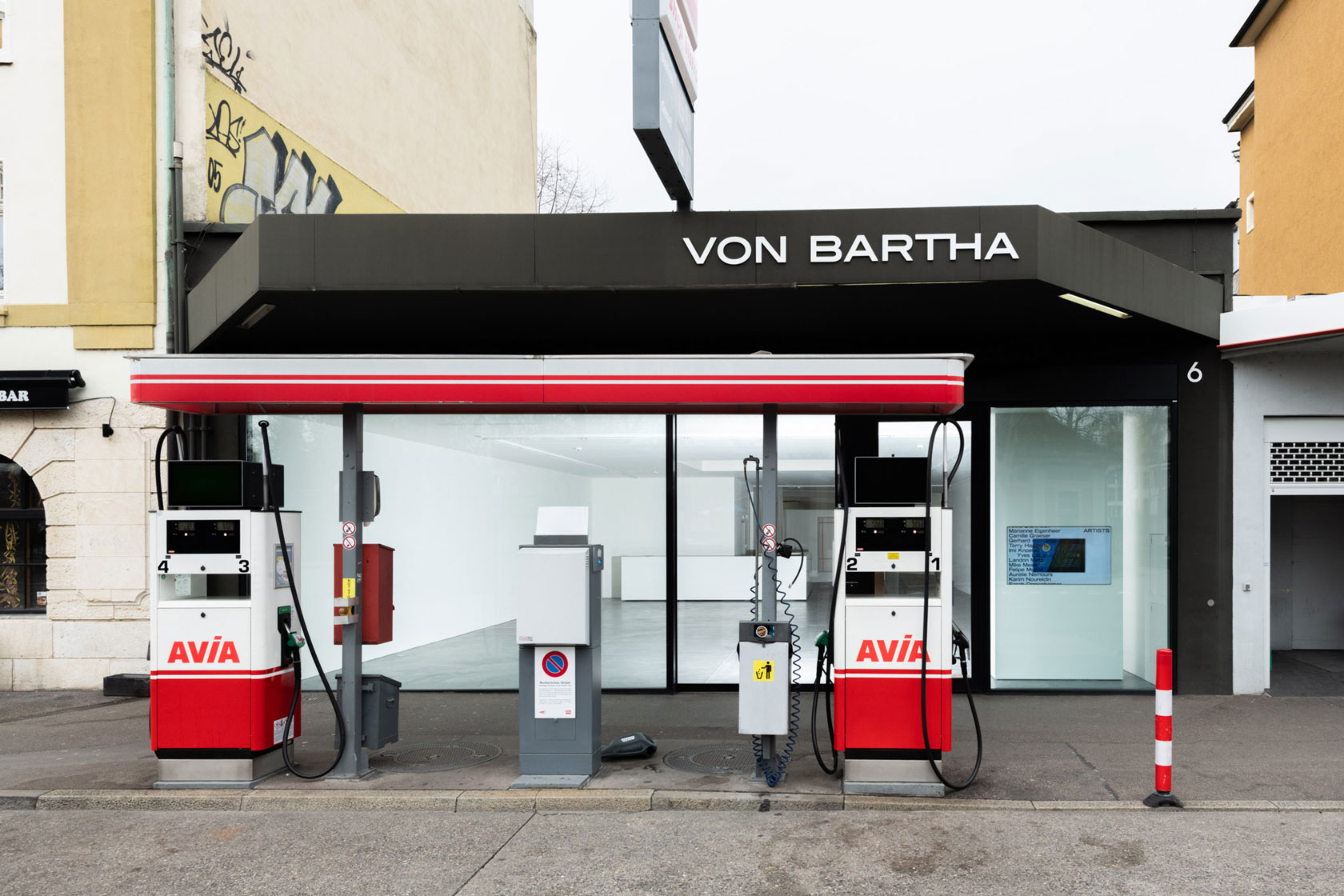
In Stefan von Bartha's childhood, everything was about art, and very little was conventional. The second-generation owner of von Bartha gallery first graced the booths of Art Basel as a one-month-old baby. He began attending studio visits with his parents aged six, skipping school with a range of ‘wild’ excuses for why school had been ‘cancelled’. ‘I was always more interested in spending time with people, experiencing art and going to shows,’ he says over Zoom from Basel.
He staged his first show at 16, exhibiting a collection of 420 robot and space toys at his parents’ Basel-based gallery. He sold every toy, except one. After stints in auction houses and a spell as a vintage design dealer, Stefan returned home to put his stamp on the von Bartha legacy.
Founded as Galerie Minimax in 1970 by Stefan’s parents, Margareta and Miklos von Bartha, the gallery’s origins were rooted in graphic design, geometric abstraction, constructivism and concretist traditions. ‘My mother was always rather behind the scenes, doing everything organisational, and my father was the “public figure”. That’s why today you can still hear many people say: “Yes your father”, but it was always a team,’ Stefan reflects in a film created for the gallery’s 50th anniversary.


Above: Margareta (front) and Miklos von Bartha (right) at one of their first Openings with Enzo Cacciola (signing a book on the left). Photo by Christoph Markwalde Below: the first Galerie Minimax invitation card, 1970. Images courtesy von Bartha.
When he took over gallery operations from his parents, Stefan sought to retain these building blocks, while carving a younger, ‘hipper’ and more international chapter for the gallery.
It wasn’t without its challenges, the biggest of which was timing: Stefan took the reins in 2008, at the height of the financial crisis. ‘It was super difficult to start because I thought “I know it all, and I want to be totally different” – I think my ego was a little bit too big’, he reflects. ‘In 2008, it was not so much fun, but it really helped me to start the extension of the new space in the middle of a gigantic financial crisis. I think I did five shows in a row without selling a single artwork.’
He also realised that imposing building the gallery had occupied for 30 years might not have the edge to attract a contemporary crowd. A building on Kannenfeldplatz Stefan stumbled across by chance hit the spot: a former car repair garage with exterior petrol pump station still intact.
Turning 50 is something we’ve been mentally preparing for for a couple of years. I’m very scared of turning 50 myself, and if I’ve made such a drama for the gallery’s anniversary, I think it’s going to be even worse for me personally
As part of the gallery’s 50th-anniversary celebrations, von Bartha staged, ‘The Backward Glance can be a Glimpse into the Future’, with accompanying book, Est. 1970. Ambitious in scale and reflective in sentiment, the show was a cross-generation celebration of the gallery’s past and future, bringing together 44 modern and contemporary artists including László Moholy-Nagy, Karim Noureldin and Claudia Wieser. ‘Turning 50 is something we’ve been mentally preparing for for a couple of years,’ says Stefan. ‘I’m very scared of turning 50 myself, and if I’ve already made such a drama for the gallery’s anniversary, I think it’s going to be even worse for me personally.’

Stefan von Bartha (behind) and his wife, Hester Koper inside their art-studded apartment which is located above von Bartha's Basel gallery.
Despite his itch to push things forward, Stefan has trodden in a few of his parents’ footsteps, namely keeping the gallery within earshot of home. ‘In 2008 I thought, I will definitely not end up like my parents living in the same space as the gallery’. But five years ago, he succumbed, moving into a loft apartment above the gallery where he live with his wife, Hester Koper, who works as von Bartha's editorial and digital marketing manager.
If there were two words to summarise the art collection in Stefan von Bartha’s apartment, they might be eclectic and extensive. ‘I don’t want to brag, but I have a lot of artworks,’ Stefan quips. It seems there is one recurring theme: each piece has had an intriguing, sometimes agonising route to ownership.
The first story begins with the apartment itself. During a discussion with architect Lukas Voellmy – who, with his office LUVO Architects was enlisted to reimagine the space six years ago – a piece of art sprang abruptly into Stefan’s mind: Sarah Oppenheimer’s eye-bending P- 21. He called the artist and she agreed to sell the towering wooden structure. The catch? The piece had very specific dimensions which the architectural plans didn’t cater for. The solution? Redesign the space to fit the art. ‘It was such a pain in the neck to get it installed but it’s now one of the highlights. It has this crazy illusion and effect of space.’

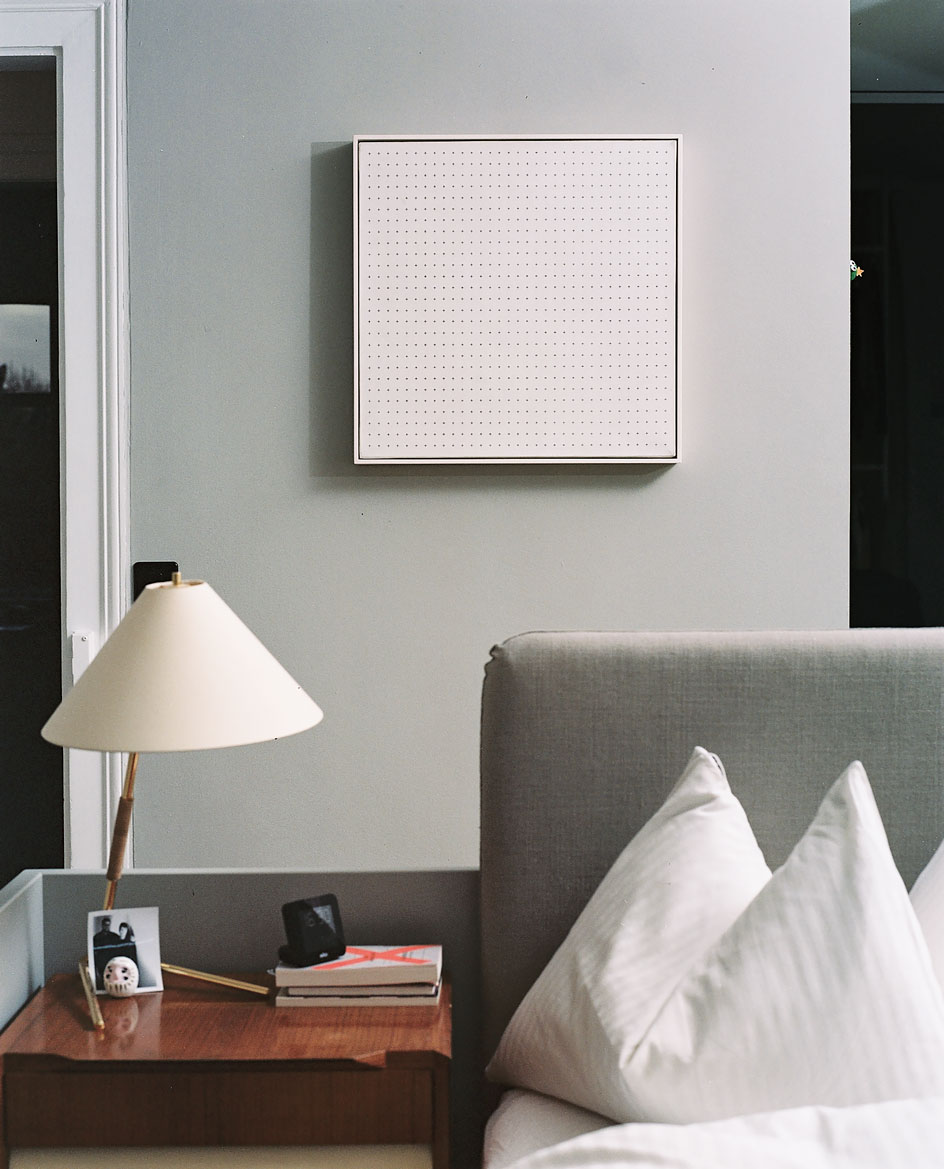
Inside Stefan von Bartha and Hester Koper's Basel apartment. Artworks pictured: Sarah Oppenheimer P- 21, 2008 (above). Aurélie Nemours, Signe croix Multiple, 1976 (below).
One piece dense with sentimental value is Signe Croix Multiple by Aurélie Nemours, the late French artist and ‘grande dame of Minimalism’. Stefan recalls visiting her Paris studio with his father aged eleven. ‘I was just looking around and found a painting hidden behind a table and took it out – rude as I am. She was very upset, [and said] “don’t touch things”’. A year later, Stefan received the painting as a gift from his father, and it’s one he will never sell. ‘For someone that doesn’t like minimal art it’s the most boring thing in the universe, and I just thought it was a really cool painting.’
An eleven-part installation by Landon Metz required exchanging an Imi Knoebel painting with the artist. Another work, Union IV, this time by Knoebel, took two days of negotiations with, and ‘getting on the nerves of’ the artist’s wife before she finally agreed to sell. ‘I think it’s going to be an all-time classic; red, blue and yellow is sometimes very boring but it will always come back,’ says von Bartha.
The work of Imi Knoebel is not just a source of admiration for Stefan but has played a key role in von Bartha’s evolution. The gallery recently opened ‘Centrum’ a solo show by the artist which includes a new series of five large-scale, monochrome paintings. The exhibition (which has been staged alongside a concurrent show by Bernar Venet) has been a source of much excitement and anticipation for Stefan. ‘I’ve been looking at the sketches for these new paintings since 2012. When they finally arrived at the gallery, I was like a kid at Christmas.’
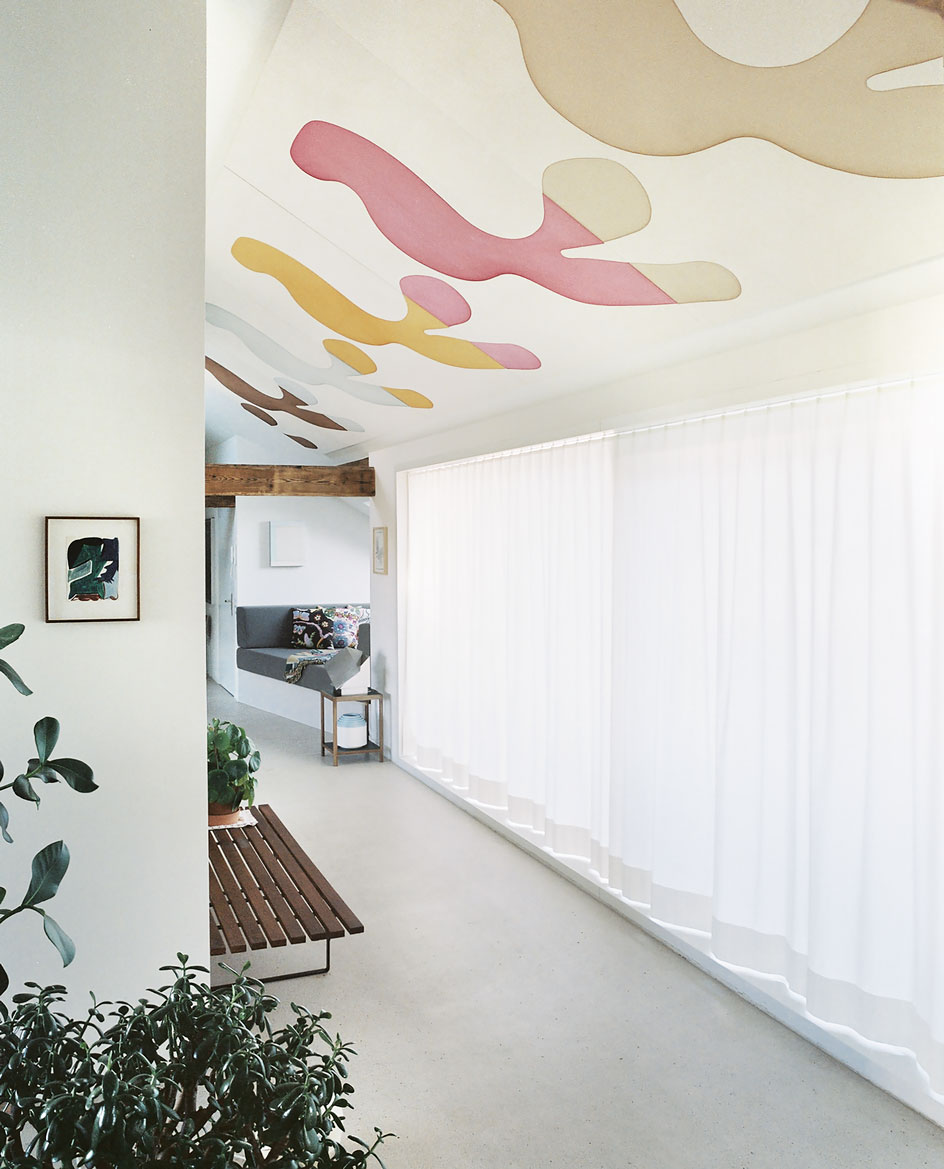

Artworks pictured include: 11 x Untitled, 2019, by Landon Metz (above). Union IV, 2018, by Imi Knoebel; Untitled, 2015 and Untitled, 2014/ 2015 by Claudia Wieser (below).
For Stefan, part of propelling the gallery into the next generation is widening its appeal to a ‘younger crowd’. ‘It would be a pity to work your arse off and only sell [art] to ten or 20 people,’ he says. Tied to the 50th-anniversary festivities, the gallery also produced three artist editions by Andrew Bick, Barbara Stauffacher Solomon and Beat Zoderer. Each is priced between a more approachable 700-1000 CHF, with 100 per cent of proceeds benefiting the Foundation for Artists in Need, an initiative conceived by Basler Kunstverein.
Stefan’s vision for von Bartha is a space for dialogue; and one which values art on its critical and cultural importance, and not how rapidly it gets snapped up. ‘If someone comes to the gallery and looks at the Imi Knoebel show tells me they think it’s total crap, I think fair enough, but we can talk about it,’ he says.
After 50 years, von Bartha is transitioning from the founding generation to the next, but even in this new age, it still feels like a family affair, and one anchored in, as Stefan concludes, ‘a huge amount of personal decisions.’
Von Bartha’s 50th anniversary film
Wallpaper* Newsletter
Receive our daily digest of inspiration, escapism and design stories from around the world direct to your inbox.

Installation view, Imi Knoebel: 'CENTRUM' at von Bartha, Basel, until 20 February 2020. Image courtesy von Bartha and the artist

Portrait of Stefan von Bartha and Hester Koper in their Basel home.

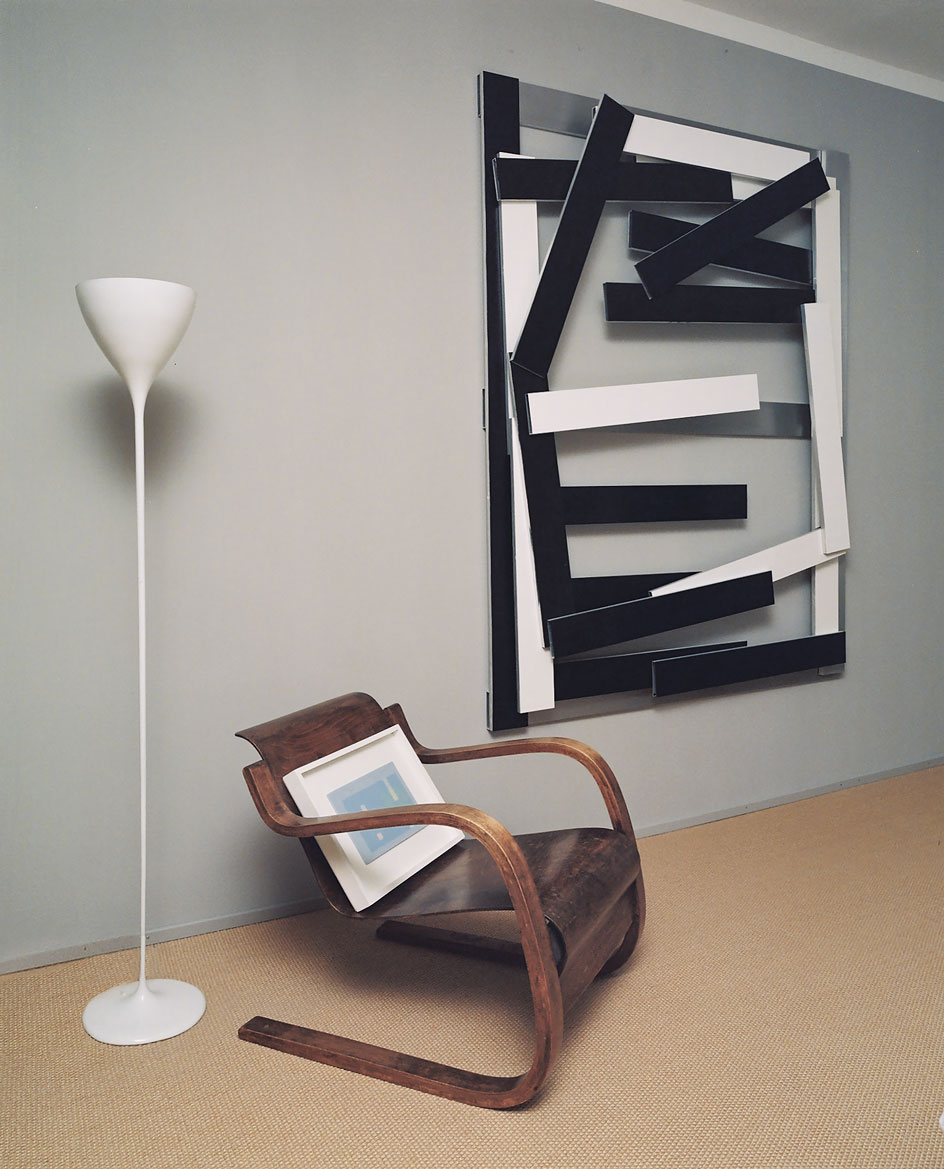

INFORMATION
Imi Knoebel: ‘CENTRUM’ and Bernar Venet: ‘TRAJECTORY’, until 20 February 2021, von Bartha. vonbartha.com
ADDRESS
von Bartha
Kannenfeldpl. 6
4056 Basel
Harriet Lloyd-Smith was the Arts Editor of Wallpaper*, responsible for the art pages across digital and print, including profiles, exhibition reviews, and contemporary art collaborations. She started at Wallpaper* in 2017 and has written for leading contemporary art publications, auction houses and arts charities, and lectured on review writing and art journalism. When she’s not writing about art, she’s making her own.
-
 Australian bathhouse ‘About Time’ bridges softness and brutalism
Australian bathhouse ‘About Time’ bridges softness and brutalism‘About Time’, an Australian bathhouse designed by Goss Studio, balances brutalist architecture and the softness of natural patina in a Japanese-inspired wellness hub
By Ellie Stathaki
-
 Marylebone restaurant Nina turns up the volume on Italian dining
Marylebone restaurant Nina turns up the volume on Italian diningAt Nina, don’t expect a view of the Amalfi Coast. Do expect pasta, leopard print and industrial chic
By Sofia de la Cruz
-
 Tour the wonderful homes of ‘Casa Mexicana’, an ode to residential architecture in Mexico
Tour the wonderful homes of ‘Casa Mexicana’, an ode to residential architecture in Mexico‘Casa Mexicana’ is a new book celebrating the country’s residential architecture, highlighting its influence across the world
By Ellie Stathaki
-
 At Home With Naoto Fukasawa
At Home With Naoto FukasawaIn our ongoing profile series, we find out what designers are making, what’s making them tick, and the moments that made them. Japanese designer Naoto Fukasawa tells us about his striking new live-work atelier in Tokyo and his ethos of not only designing objects, but an integrated atmosphere
By Joanna Kawecki
-
 Bodil Kjær at 90: ‘I am not a furniture designer; I am a designer of environments’
Bodil Kjær at 90: ‘I am not a furniture designer; I am a designer of environments’We celebrate the work of Danish architect and designer Bodil Kjær, on her 90th birthday (11 March 2022). In this exclusive interview, she shares her views on spaces, furniture and her life in design
By Jeni Porter
-
 Nifemi Ogunro talks design and family
Nifemi Ogunro talks design and familyExplore the work and inspiration of Brooklyn-based artist and designer Nifemi Ogunro
By Camille Okhio
-
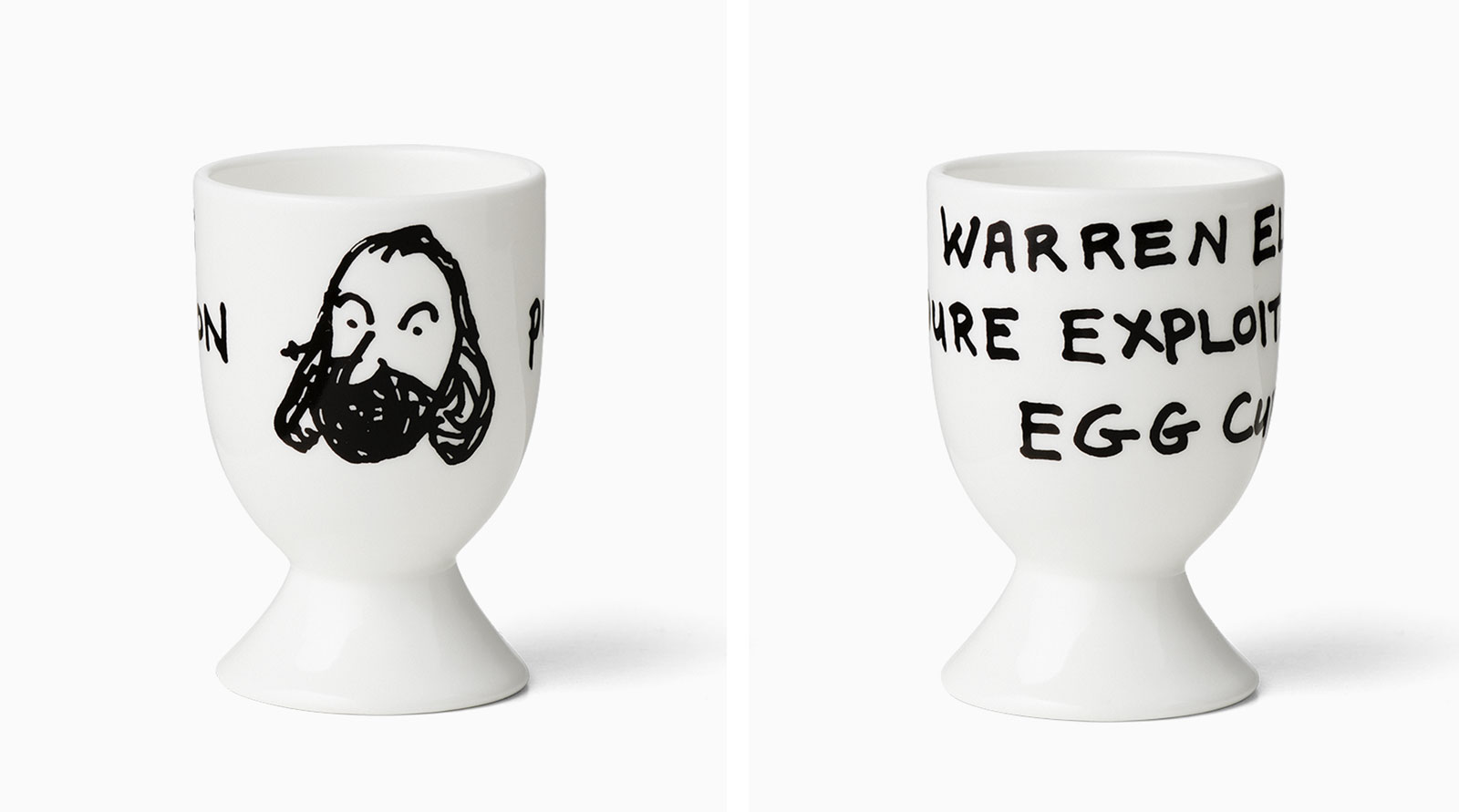 Nick Cave on cracking smiles and breaking eggs
Nick Cave on cracking smiles and breaking eggsNick Cave adds ‘the greatest little egg cup ever' to his recently launched shop Cave Things
By Melina Keays
-
 Kelly Wearstler makes over a midcentury Malibu beach house
Kelly Wearstler makes over a midcentury Malibu beach houseThe American designer fills her Malibu beachside home with pieces from an extensive and eclectic design collection
By TF Chan
-
 Formafantasma on GEO-Design and design education
Formafantasma on GEO-Design and design educationDesign Emergency began as an Instagram Live series during the Covid-19 pandemic and is now becoming a wake-up call to the world, and compelling evidence of the power of design to effect radical and far-reaching change. Co-founders Paola Antonelli and Alice Rawsthorn took over the October 2020 issue of Wallpaper* – available to download free here – to present stories of design’s new purpose and promise. Here, Paola Antonelli talks to designers Andrea Trimarchi and Simone Farresin of Studio Formafantasma
By Paola Antonelli
-
 The imagined modernist world of 3D artist Alexis Christodoulou
The imagined modernist world of 3D artist Alexis ChristodoulouBy Jessica Klingelfuss
-
 Wabi savvy: Antwerp aesthete Axel Vervoordt has built an ever-expanding empire on art
Wabi savvy: Antwerp aesthete Axel Vervoordt has built an ever-expanding empire on artBy Emma O'Kelly